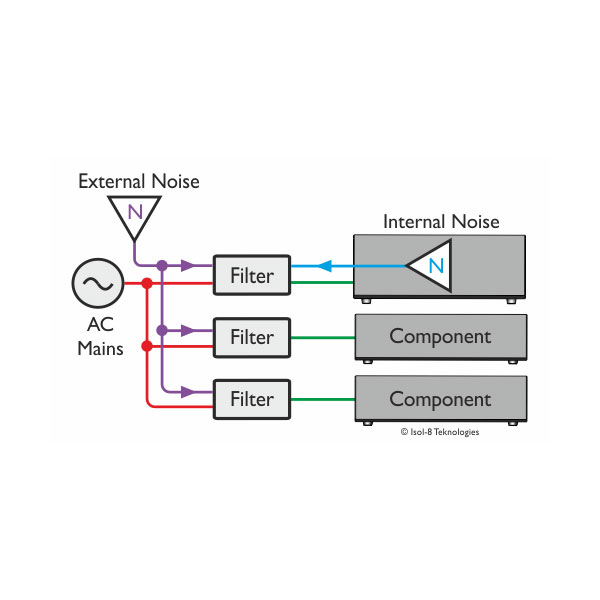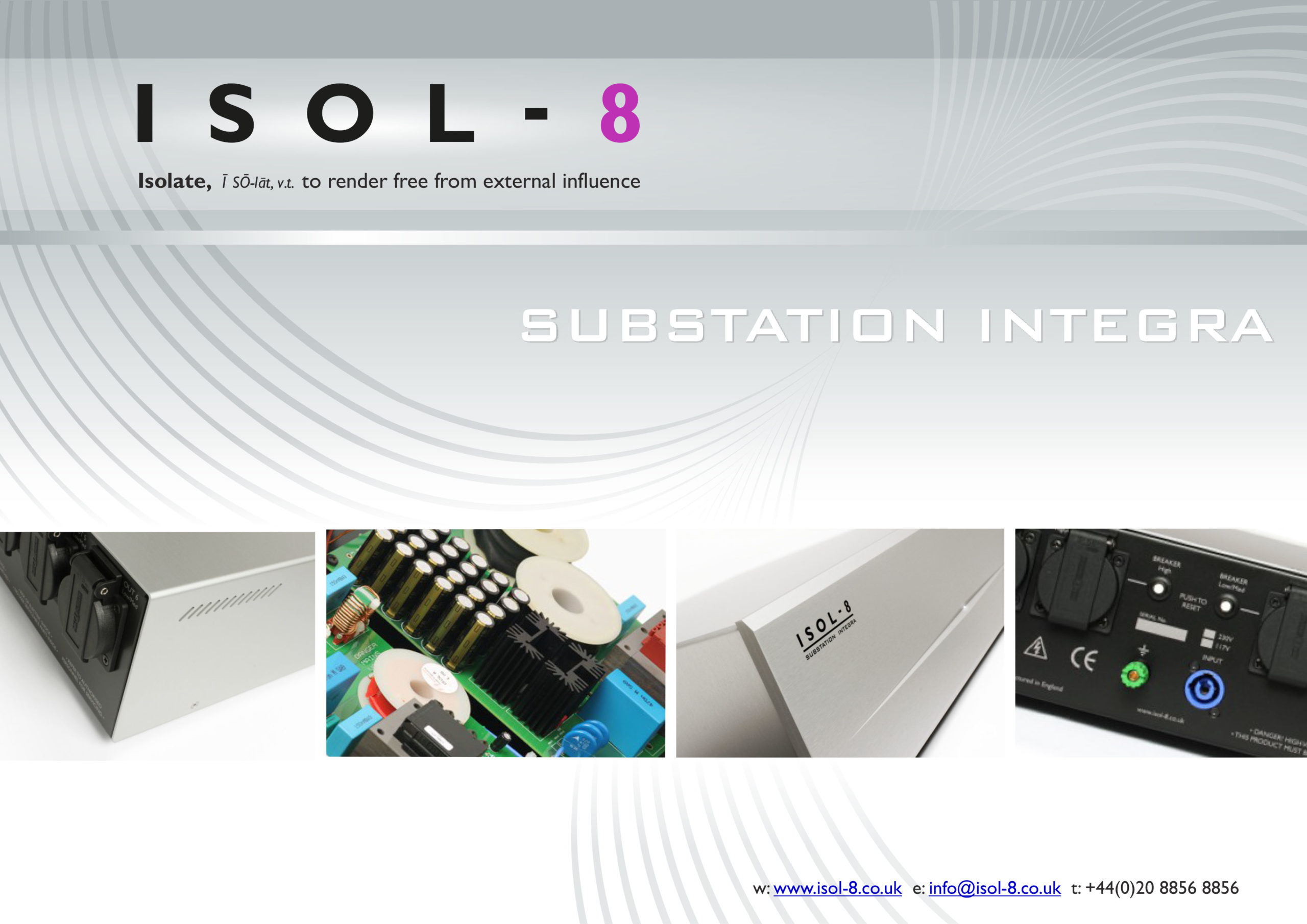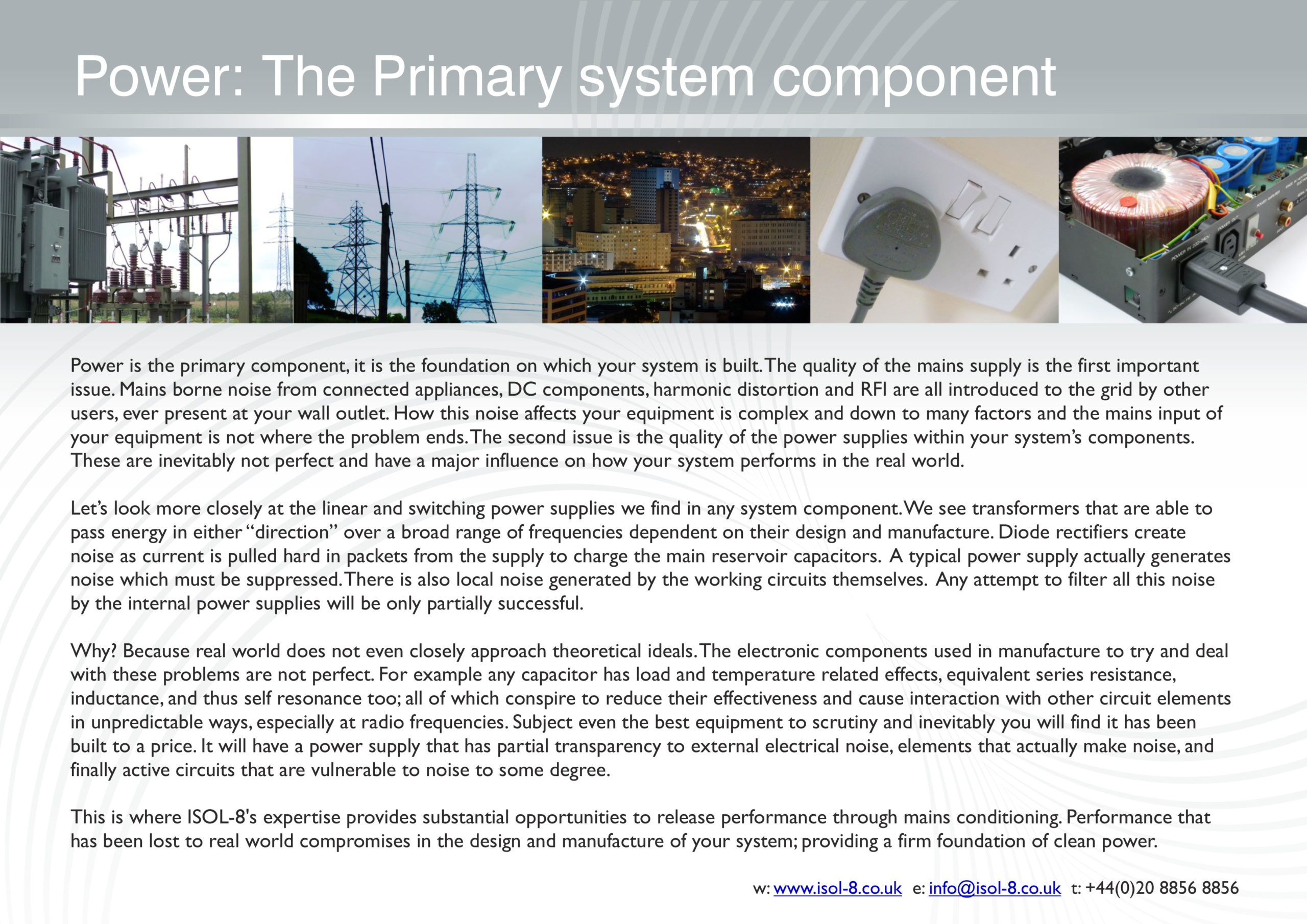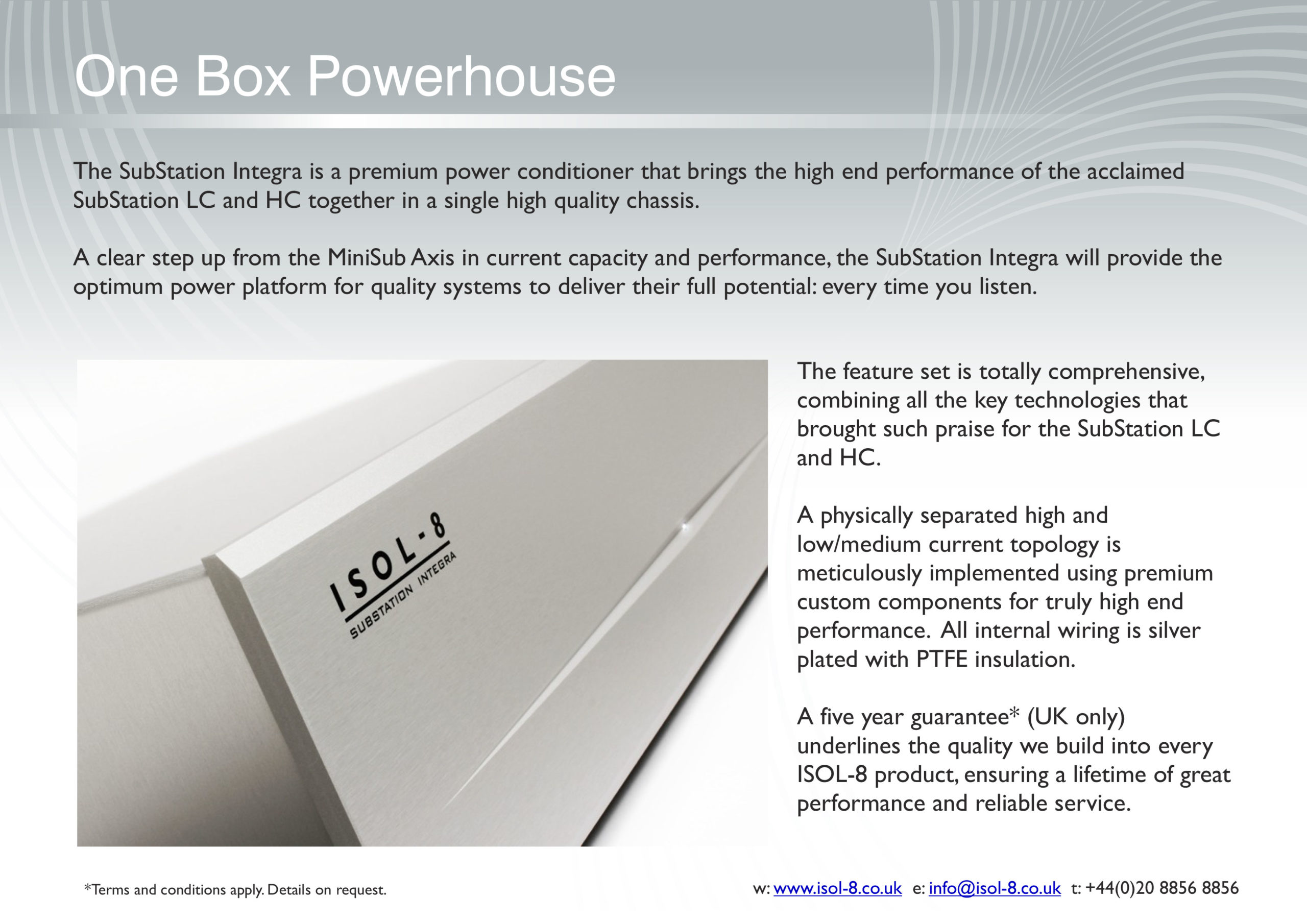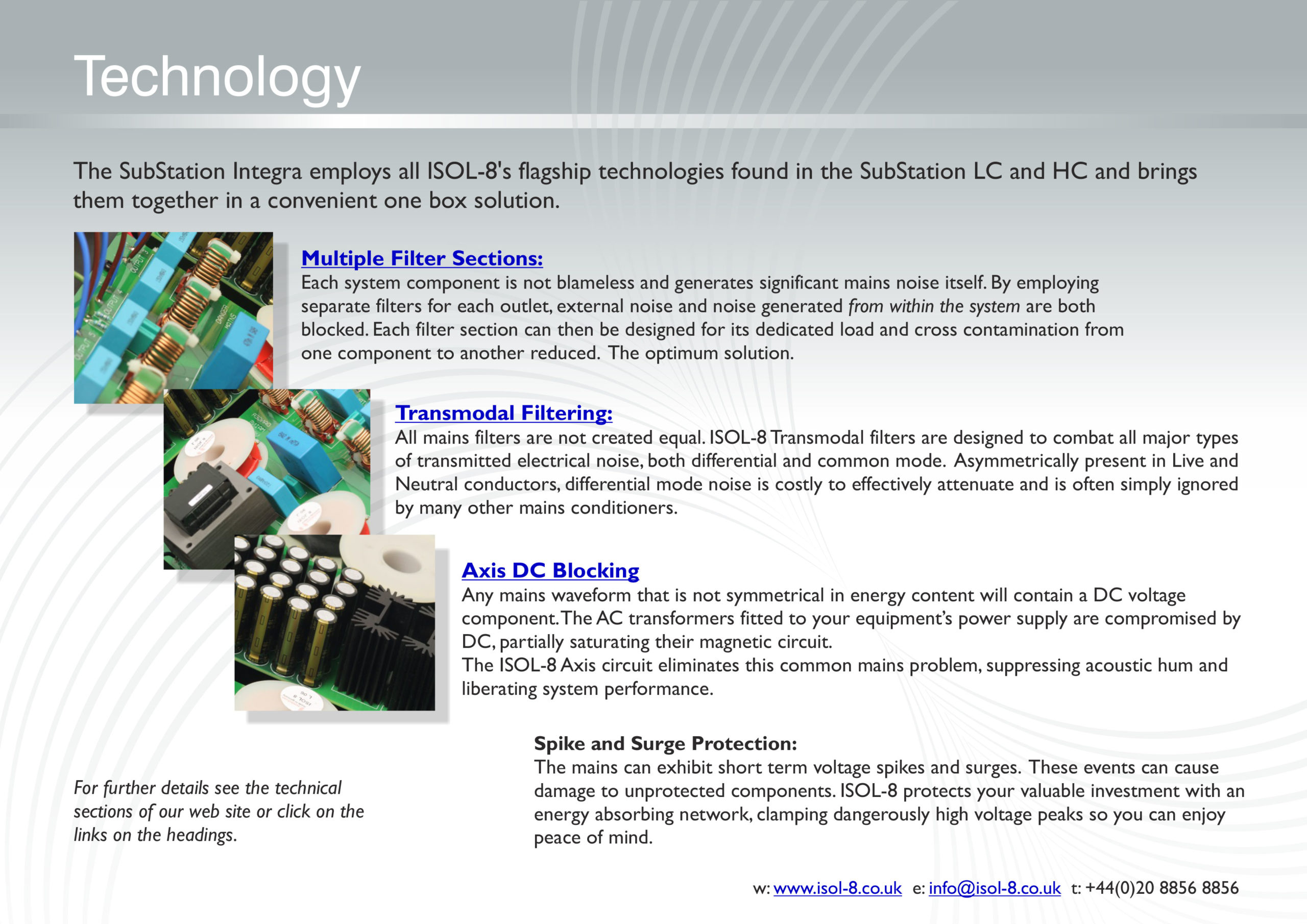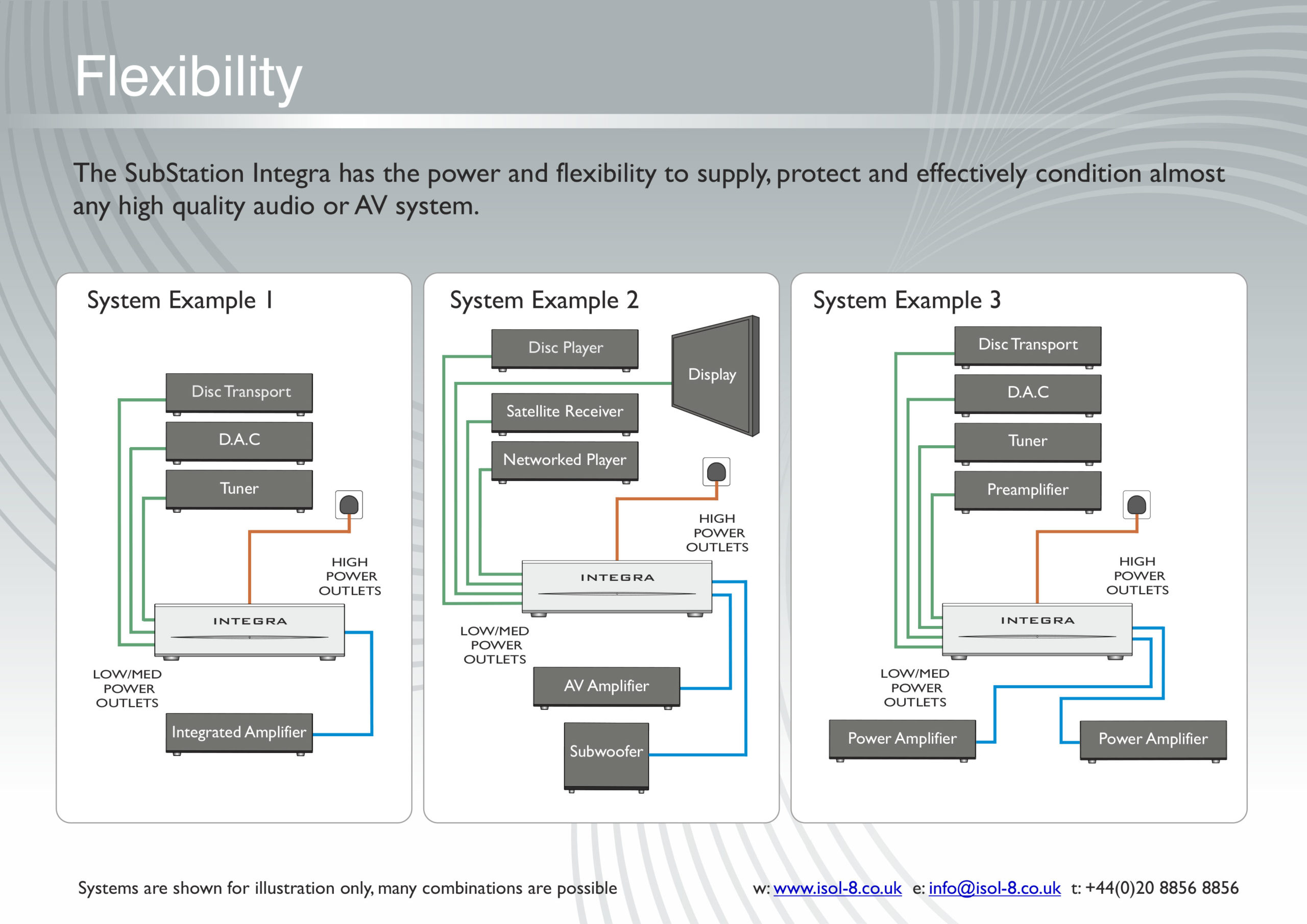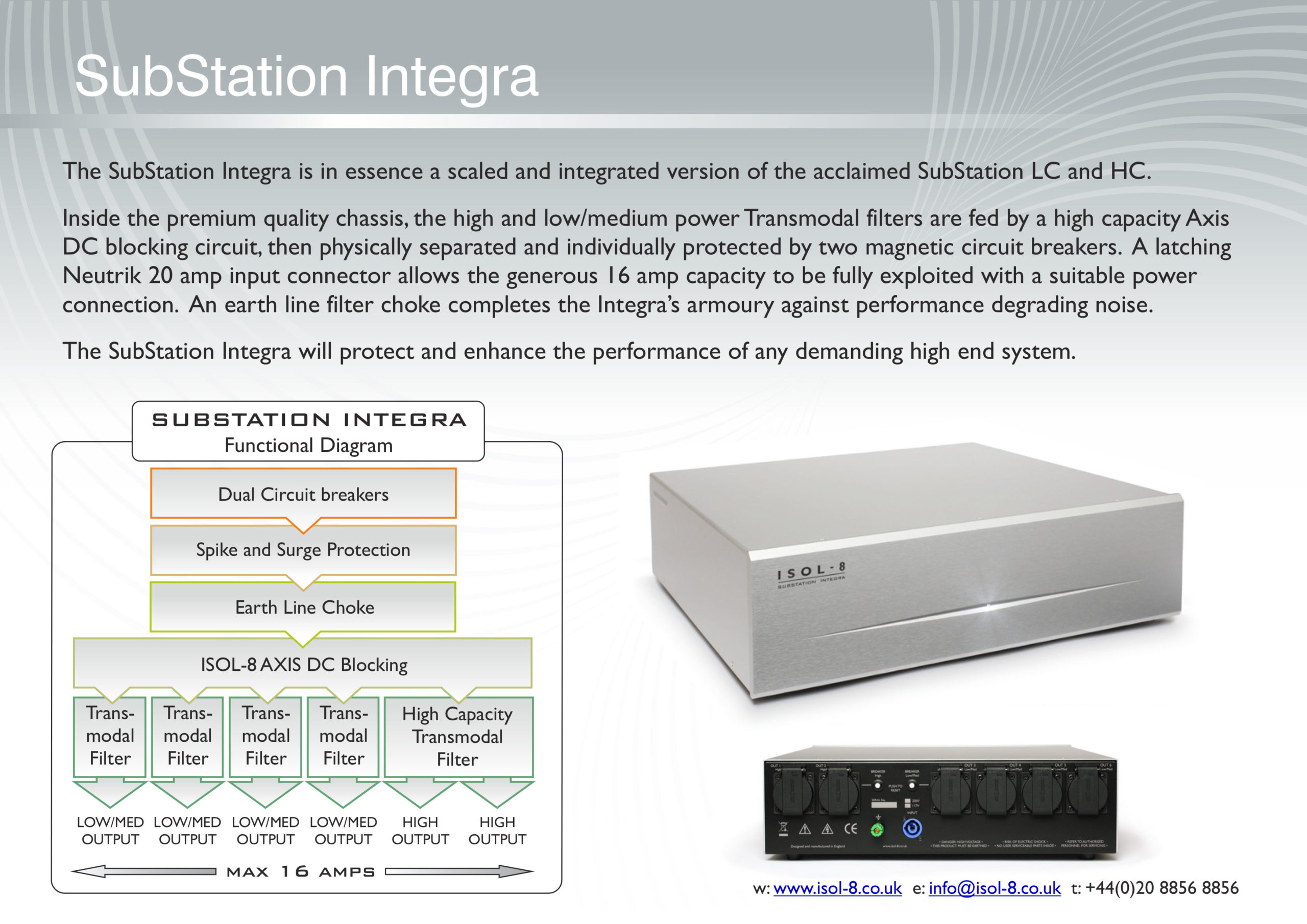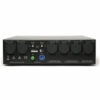ISOL-8 SubStation Integra
A 20 Amp rated Neutrik latching input connector allows the 16A total capacity to be exploited with a suitable mains connection. The inlet is centrally positioned to minimise electrical and magnetic interaction between the two filter groups, which are individually protected by high quality magnetic circuit breakers.
The SubStation Integra has two individual filter sections. There are four low to medium current outlets optimised for source components, and two high current outlets optimised for power hungry components such as amplifiers. All are served by a high capacity ISOL-8 Axis circuit which blocks any performance degrading DC present on the mains. All outputs are surge and spike protected. A custom wound choke also filters any noise present on the safety earth wiring.
The four outlets optimised for source components each have their own dedicated Transmodal filter. This prevents noise generated from each component within the system degrading the performance of another, reducing noise cross contamination between components. This phenomenon is potentially as damaging to sound and picture quality as noise attack from outside the system.
The two high current outlets are optimised for current hungry loads such as power amplifiers. The very low series resistance Transmodal topology means that high peak currents are passed effortlessly without dynamic compression, whilst still being effectively filtered.
The SubStation Integra is engineered to provide a lifetime of reliable service. The beautifully crafted enclosure features a CNC engineered 10mm alloy front panel and aluminium lid.
All outlets are protected against dust and dirt to IP54. Premium polypropylene capacitors, Mundorf OFC inductors and ISOL-8 custom wound chokes ensure superior performance.
Wiring is silver plated copper with PTFE insulation throughout.
With a little less current capacity and a lot less cost than its critically acclaimed LC and HC brethren, the SubStation Integra provides a solid foundation for supplying high end systems with clean power. The comprehensive feature set and powerful, but dynamically transparent filter complement will ensure your system delivers its full potential every time.
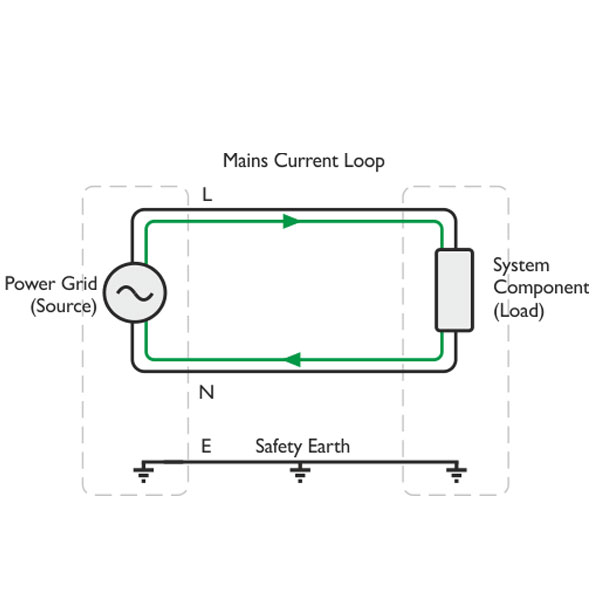
Noise can enter any current loop in a number of ways, but can be largely categorised into two types or modes.
Firstly we’ll look at Differential Mode Noise. This occurs when only one conductor of a current loop encounters a noise source. The noise therefore circulates within the loop. For example this occurs when conductors are not closely coupled; such as in equipment internal wiring or when the noise is generated from circuit elements within the load or source itself.
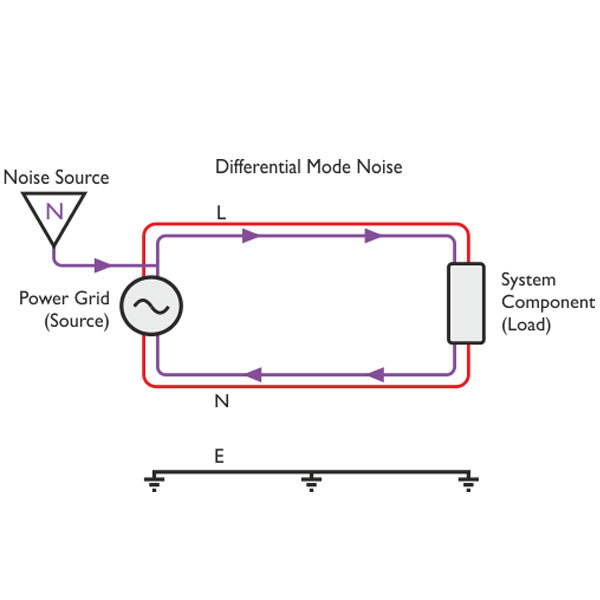
Secondly we’ll look at Common Mode Noise. This occurs in both conductors of a current loop; equally and in phase with respect to ground. An instance being closely coupled live and neutral conductors encountering an electromagnetic field that immerses both conductors equally. For example; a cable picking up transmitted radio energy, from broadcast or wi-fi transmitters for example. The noise has its own current loop and returns through the safety earth conductor via the stray capacitance present in all distributed electrical systems.
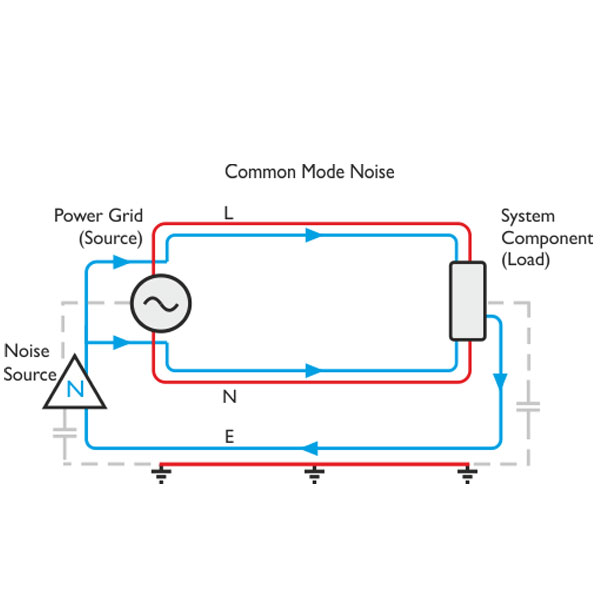
Both these types of noise are commonly found in the real world. Now let’s look at how to reduce the unwanted noise entering the load. With Common Mode Noise a filter can be readily designed to attenuate the energy down to a given frequency using a common mode inductor. This uses phase cancellation to attenuate unwanted noise. The physical geometry of the inductor produces a relatively large value of inductance, given the core size and number of wire turns. It therefore produces effective filtering but for common noise only. Differential mode noise is able to pass through the filter readily.
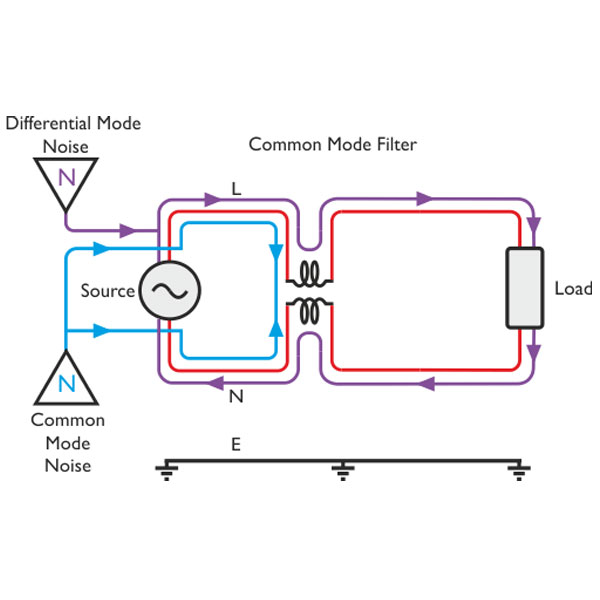
A different topology is needed to attenuate Differential Mode noise. In this case only separate series inductors in the send (live) and return (neutral) in combination with a shunt capacitor in the current loop can attenuate the noise. Unfortunately the favourable geometry of the common mode inductor is not effective in this case. The series inductors used in the filter must use larger cores and more turns of wire to provide effective attenuation for differential mode noise compared with common mode.
Inferior mains conditioners may claim they filter differential mode noise but in fact use shunt elements without series inductors to divert the noise to earth (known as a Delta configuration). This then pollutes the earth instead, not the optimum solution for sensitive audio equipment as noise is still present on the earth line.
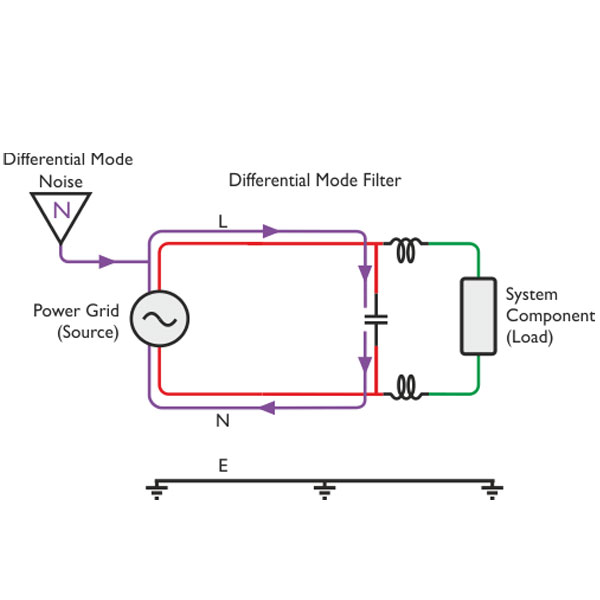
ISOL-8 Transmodal Filter: Warning! All mains conditioning is not created equal. Most manufacturers of mains conditioning equipment completely fail to effectively filter differential mode noise as it adds both complexity and cost. ISOL-8 Transmodal filters combat both common and differential modes of transmitted noise whilst keeping the earth clean for maximum filter performance at all times.
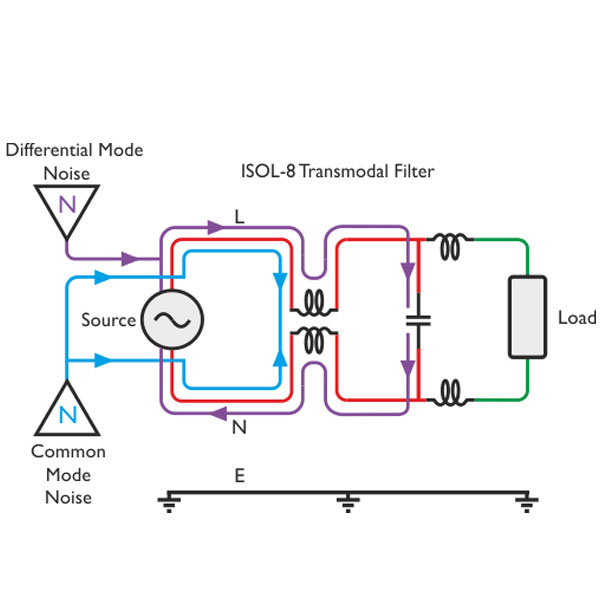
Cross Contamination Explained
The problem of noise cross contamination through power supply is often overlooked. Reducing its effect can result in significant performance gains for any system.
The key point is to understand is that each system component is not blameless and generates significant mains noise itself. In terms of power supply, it is also usually in close proximity to other components in the system, compounding the problem.
If you have system that contains a single component, one filter will protect it from mains borne noise:
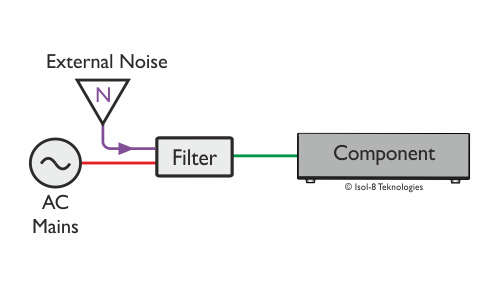
Despite the presence of the filter, adding other components still allows noise to circulate in the system. Any noise generated within the system passes from one system component to another as they are all connected to each other in parallel after the filter. The presence of the filter will have an effect on this transmission, but it is far from the optimum solution.
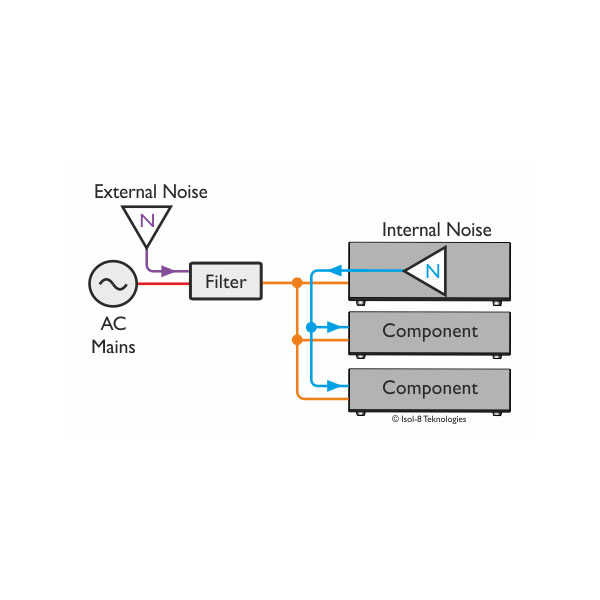
A multiple filter configuration, as pioneered by ISOL-8’s designer Nic Poulson, is the optimum solution. External noise is blocked as before. But significantly, each component is also prevented from influencing the performance of another, releasing maximum performance.
